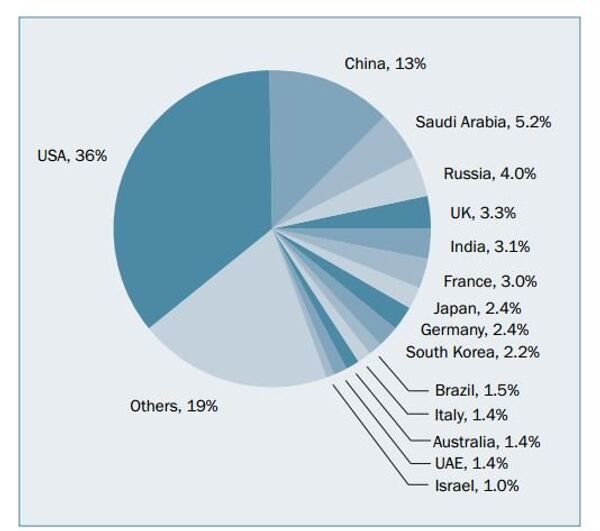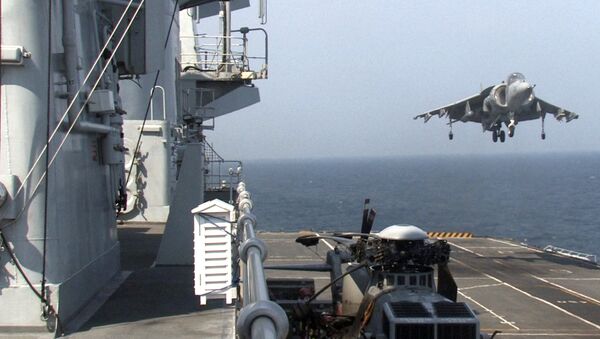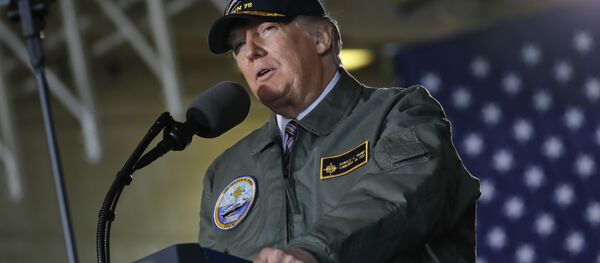Specifically, the US Marine Corps would close down operations for six F/A-18 squadrons, which feature between 12 and 24 jets each, along with four Harrier squadrons, according to Lt. Gen. Jon Davis.
"So, half our fleet," Davis said.
The US Navy echoed the readiness concerns expressed by the Marines. While not specifying how many jets would halt operations, US naval forces "are going to have to shut down squadrons as well," Rear Adm. Chip Miller told the House Armed Service Committee on March 28.
The current continuing resolution, or CR, caps military spending lower than what the military would prefer. US President Donald Trump has submitted to the House a new budget that would boost military spending by almost 10 percent, to more than $639 billion. The $54 billion in new spending for the military comprises 80 percent of Russia’s annual defense expenditures, The Intercept reported.
The Stockholm International Peace Research Institute calculated that in 2015, when Trump was only a candidate for president, America’s military expenditures comprised 36 percent of the global total.

Trump’s proposed budget may be dead on arrival, however, since it "lacks meaningful detail," according to Howard Rubel, a defense industry analyst at Jefferies investment bank. In fact, the White House budget actually “has the potential to add to budget gridlock,” Rubel said.
The Air Force previously said it was reviewing plans to get new, lower-cost B-52 engines, given that the eight-engine plane currently consumes near $70,000 per flying hour, Sputnik reported February 10. The current CR forced officials to alter course in how they will make these acquisitions, with prospects for funding new military equipment projects in the form of public-private financing arrangements.



